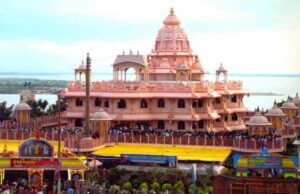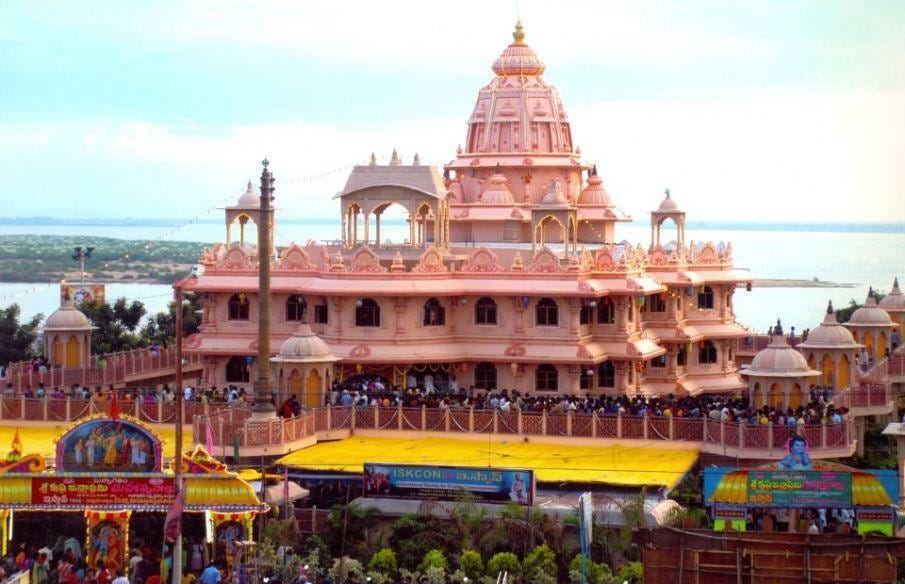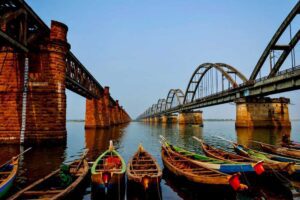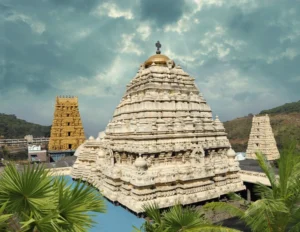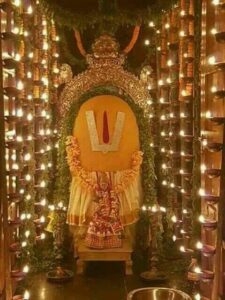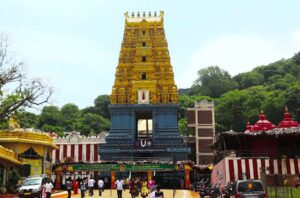Andhra Pradesh
Andhra Pradesh, located in southeastern India, boasts a rich tapestry of culture, history, and natural beauty. From the bustling cityscape of Hyderabad, with its iconic Charminar and flavorful cuisine, to the serene landscapes of Araku Valley and Borra Caves, the state offers diverse experiences. Pilgrimage sites like Tirupati Balaji Temple draw millions of devotees annually, while historical wonders like Golconda Fort and Undavalli Caves showcase architectural marvels. With picturesque hill stations, tranquil lakes, and lush greenery, Andhra Pradesh captivates travelers with its charm. Whether seeking adventure, spirituality, or relaxation, this vibrant state promises an unforgettable journey.
15 tourist attractions places in Andhra Pradesh
1). Tirupati Balaji Temple
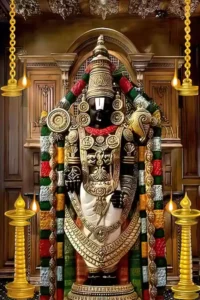
Tirupati Balaji Temple, located in the hill town of Tirumala in Andhra Pradesh, is one of the most revered and visited pilgrimage sites in India. Dedicated to Lord Venkateswara, an incarnation of Lord Vishnu, the temple draws millions of devotees from all over the world each year.
The temple is known for its stunning Dravidian architecture, with its towering gopurams (entrance towers) adorned with intricate sculptures depicting various legends and mythological stories. The main deity, Lord Venkateswara, is enshrined in the sanctum sanctorum, and devotees offer prayers and seek blessings for prosperity and fulfillment of their wishes.
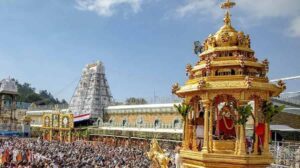
One of the unique aspects of the temple is its tradition of ‘darshan’ (sacred viewing) which involves standing in long queues to catch a glimpse of the deity. The atmosphere is charged with devotion as devotees chant hymns and recite prayers while waiting for their turn.
The temple complex also includes various other shrines, halls, and pavilions dedicated to different gods and goddesses, along with facilities for accommodation, dining, and other amenities to cater to the needs of pilgrims.
Apart from its religious significance, Tirupati Balaji Temple also holds cultural and historical importance, with mentions in ancient scriptures and legends. The temple’s serene surroundings nestled amidst the lush Eastern Ghats add to its spiritual ambiance, making it a truly divine destination for seekers of faith and spirituality.
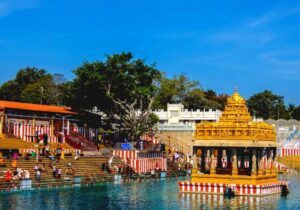
2). Araku Valley
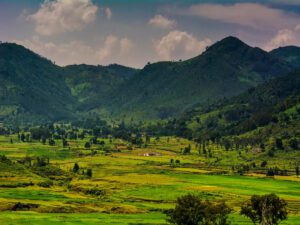
Nestled amidst the Eastern Ghats in Andhra Pradesh, Araku Valley is a captivating hill station renowned for its breathtaking landscapes and serene atmosphere. Situated about 115 kilometers from Visakhapatnam, this picturesque destination boasts lush greenery, cascading waterfalls, and sprawling coffee plantations that stretch as far as the eye can see.
Visitors to Araku Valley can embark on scenic drives along winding roads that offer stunning panoramic views of the surrounding hills and valleys. The journey itself is a treat, with every turn revealing new vistas and natural wonders. The valley is also dotted with tribal villages, providing an opportunity to experience the rich cultural heritage of the region and interact with the local communities.
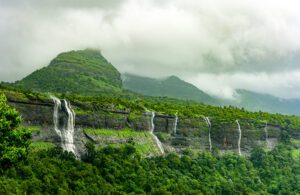
One of the highlights of a trip to Araku Valley is a visit to the Borra Caves, a geological marvel known for its intricate stalactite and stalagmite formations. Exploring the cool, dimly lit caverns is like stepping into another world, where nature’s artistry takes center stage.
Adventure enthusiasts can indulge in trekking, camping, and nature walks amidst the verdant surroundings, while those seeking relaxation can simply unwind amidst the tranquility of the hills. The region’s pleasant climate makes it an ideal getaway throughout the year, offering respite from the hustle and bustle of city life.
Whether you’re a nature lover, an adventure seeker, or a cultural enthusiast, Araku Valley has something to offer for everyone. With its pristine beauty and serene ambiance, it’s no wonder that this hill station is a popular destination for travelers looking to escape into the lap of nature.
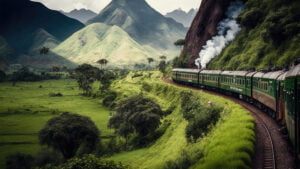
3). Borra Caves
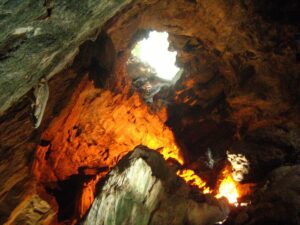
Nestled amidst the lush greenery of the Eastern Ghats near Visakhapatnam, Borra Caves stand as a testament to nature’s artistic prowess. These ancient limestone caves, formed millions of years ago, boast a mesmerizing array of stalactite and stalagmite formations, some of which resemble various mythical creatures and deities.
Venturing into the depths of Borra Caves unveils a fascinating world of underground wonders, where shafts of sunlight pierce through crevices, illuminating the cavernous chambers with an ethereal glow. Visitors can marvel at the intricate patterns created by the slow drip of mineral-rich water over centuries, shaping the cave’s surreal landscape.
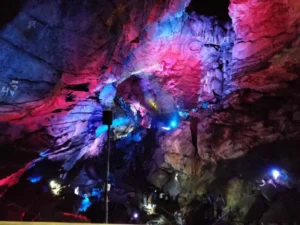
Beyond its geological marvels, Borra Caves hold cultural significance as well, with local legends and folklore woven around its mystical aura. The caves are believed to be sacred by the indigenous tribes residing in the area, adding an air of mysticism to the already enchanting ambiance.
Exploring Borra Caves offers a unique adventure for nature enthusiasts and history buffs alike, providing a glimpse into the ancient geological processes that have shaped the landscape of Andhra Pradesh for millennia. Whether you’re captivated by the natural beauty of its formations or intrigued by the myths and stories that surround it, a visit to Borra Caves promises an unforgettable experience in the heart of Eastern India’s natural wonders.
4). Vijayawada
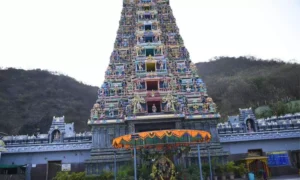
Vijayawada, located in the heart of Andhra Pradesh, is a vibrant city that blends rich history with modernity. Situated on the banks of the Krishna River, Vijayawada is often referred to as the “City of Victory” and serves as a major cultural and commercial hub in the region.
One of the city’s most prominent landmarks is the Kanaka Durga Temple, perched atop the Indrakeeladri Hill, dedicated to the powerful Goddess Kanaka Durga. The temple attracts pilgrims from far and wide, especially during the annual Navaratri festival when the city comes alive with festivities.
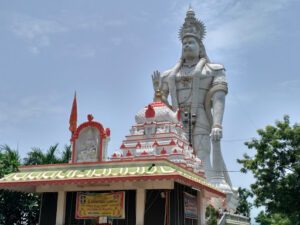
Vijayawada is also known for its impressive Kondapalli Fort, offering panoramic views of the surrounding landscape. This historic fort, nestled amidst lush greenery, reflects the architectural prowess of the bygone era and is a must-visit for history enthusiasts.
For nature lovers, the city offers tranquil escapes like Bhavani Island, a serene spot on the Krishna River, ideal for picnics and leisurely boat rides. Additionally, Prakasam Barrage, a modern engineering marvel, serves as a popular attraction where visitors can enjoy scenic views of the river and the city skyline.
The bustling streets of Vijayawada are dotted with markets, offering a treasure trove of traditional handicrafts, spices, and street food delights. Indulge in local delicacies like Pesarattu (green gram dosa) and Bandar Laddu (famous sweet) for a taste of authentic Andhra cuisine.
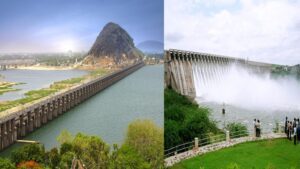
With its blend of heritage, spirituality, and modernity, Vijayawada invites travelers to immerse themselves in its diverse offerings and experience the unique charm of Andhra Pradesh’s cultural capital.
5). Sri Venkateswara Zoological Park

6). Kondapalli Fort
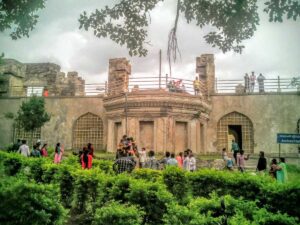
Kondapalli Fort, also known as Kondapalli Kota and Kondapalli Quilla, is located west of Kondapalli in Ibrahimpatnam mandal of NTR district in Andhra Pradesh, India. It was built by Prolaya Vema Reddy of the Reddy Kingdom in the 14th century AD. It was built as a recreational and commercial center, then as a military training ground for the British government. According to other historians, Anna Vema Reddy built it in 1360 AD after conquering Kondapalli from Mudigonda Chalukyas. The fort has been home to many dynasties, from the Reddi Gajapati dynasty of rulers to the Nizam Nawabs and to the Far East. Indian company.

Geography
The fort is located west of Vijayawada city on a large hill known as Kondapalli in Krishna district. The mountain range, about 24 kilometers (15 mi) long, stretches between Nandigama and Vijayawada. The forest area on this hill is filled with a type of firewood known as ‘ponuku’ पूनुकु कऱरັ (Gyrocapus jacquini), which is used exclusively for the famous Kondpalli game. The forest around Kondapalli Fort and the nearby hills are also known for medicinal plants and plants like Phyllanthus amarus (Telugu local name “nela usiri” ਨੀਲ ਉਸਿਰਿਕ ਕਟਟ, ਕਟੀ ਕਟਟ, ਤ ਮਾਰੀ ਚ. pa \” মীপা or \”nelavemu\” ন্ল্লেমুম), Thedlapala (Wrightia tinctoria), Tephrosia purpurea, Albizia amara, Streulia urens and Chloroxylon sweetened. khondalites, pyroxenites and dolerites.
7). Papikondalu
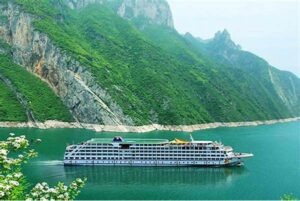
Papikondalu Hills runs along the Godavari River (West Godavari) and is located in Rajahmundry, Andhra Pradesh. Papikondalu is a pure feast for the eyes in terms of its natural beauty. As the mountains approach the visitor, the width of the mighty Godavari narrows. In accordance with this vision as the middle section of a woman’s hair, its original name is “Papidi”. Kondalu-Paidi in Telugu means the middle section of a woman’s hair. Later, it was known as Papikondalu in the local language. With the closure of the river, the people who make it to Papi Hills have an exciting visual experience. Its beauty is often compared to that of Kashmir, as the surrounding area is beautiful and rich. These areas boast of water in Munivatnam.
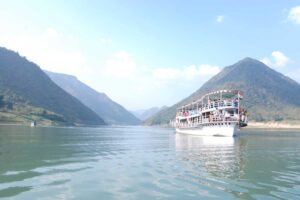
8). Belum Caves
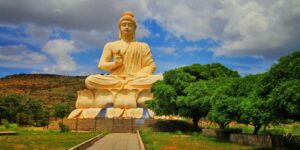
Belum Caves, located in the Nandyala district of Rayalaseema district of Andhra Pradesh, is the second most modern cave system in the Indian subcontinent, famous for its forms, such as stalactites and stalagmites. Belum Caves features long corridors, galleries, and large caves with fresh water and siphons. This cave system was formed over tens of thousands of years by groundwater flowing from the now-drained Chitravathi River. The cave system reaches its deepest point (46 m (151 ft) from the entrance) at a place known as Patalaganga. The Belum Caves are 3,229 m (10,593.8 ft) long, making them the second largest cave in the Indian subcontinent after the Krem Liat Prah Caves in Meghalaya. It is one of the central protected monuments of the country. Belum came to the attention of scientists in 1884 thanks to the British explorer, Robert Bruce Foote, and from 1982 to 1984, a group of German explorers led by H. Daniel Gebauer made a thorough investigation of the caves. In 1988, the Andhra Pradesh government declared the site protected and the Andhra Pradesh Tourism Development Corporation (APTDC) developed the caves as a tourist destination in February 2002. Today, the 3.5 km (2.2 mi) caves have been fully explored, although it is only 1.5. km (0.9 mi) available for guests. There are 16 different ways, including the entrance to the quartz deposit in the cave. The caves are made of black limestone.
9). Bhavani Island
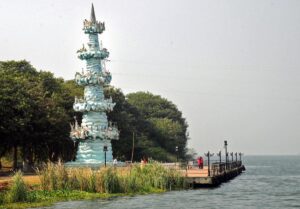
Bhavani Island, nestled amidst the scenic Krishna River in Andhra Pradesh, is a tranquil retreat offering a serene escape from the hustle and bustle of urban life. Spread across an area of approximately 130 acres, this picturesque island is a popular tourist destination known for its natural beauty, leisure activities, and recreational facilities.
Visitors to Bhavani Island can enjoy a variety of outdoor activities amidst lush greenery and stunning river views. Boating is a favorite pastime here, with options including paddle boats, speed boats, and motorboats, allowing guests to explore the surrounding waters at their own pace.
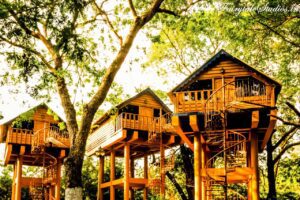
The island also offers opportunities for picnicking, with well-maintained lawns, picnic spots, and shaded areas providing a perfect setting for family gatherings and outings. Adventure enthusiasts can indulge in activities like zip-lining and rope courses, while nature lovers can take leisurely walks along the island’s scenic trails.
For those seeking relaxation, Bhavani Island features comfortable cottages and accommodation options, allowing guests to extend their stay and immerse themselves in the tranquility of riverside living. The island’s restaurants and eateries serve delicious local cuisine, ensuring a delightful culinary experience for visitors.
With its serene ambiance, lush landscapes, and range of recreational activities, Bhavani Island offers a refreshing escape for travelers seeking a peaceful retreat amidst nature’s splendor in Andhra Pradesh.
10). Lepakshi Temple
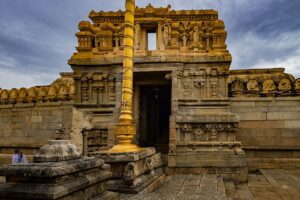
Lepakshi Temple, located in the Anantapur district of Andhra Pradesh, is an architectural masterpiece and a testament to the artistic brilliance of the Vijayanagara Empire. Built in the 16th century during the reign of the Vijayanagara kings, the temple is dedicated to Lord Veerabhadra, a fierce form of Lord Shiva.
One of the most striking features of Lepakshi Temple is its intricately carved stone sculptures and exquisite mural paintings that adorn its walls and ceilings. The temple’s pillars, in particular, showcase remarkable craftsmanship, with each pillar featuring intricate carvings depicting mythological tales, celestial beings, and intricate motifs.
The centerpiece of Lepakshi Temple is the colossal statue of Lord Veerabhadra, standing over 15 feet tall and adorned with intricate jewelry and weapons. The temple also houses shrines dedicated to other deities, including Lord Shiva, Goddess Parvati, and Lord Vishnu.
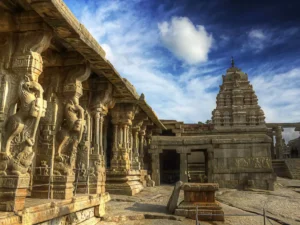
Apart from its religious significance, Lepakshi Temple is also renowned for its architectural marvels, such as the hanging pillar, which is said to defy gravity by standing without any visible support. Legend has it that the temple’s construction was halted abruptly, resulting in some unfinished portions, including the incomplete Kalyana Mandapa.
Visitors to Lepakshi Temple can marvel at its architectural grandeur, explore its rich history and mythology, and soak in the spiritual ambiance of this ancient shrine. The temple’s serene surroundings, lush greenery, and tranquil atmosphere make it a must-visit destination for history buffs, art enthusiasts, and spiritual seekers alike.
11). Rajahmundry
